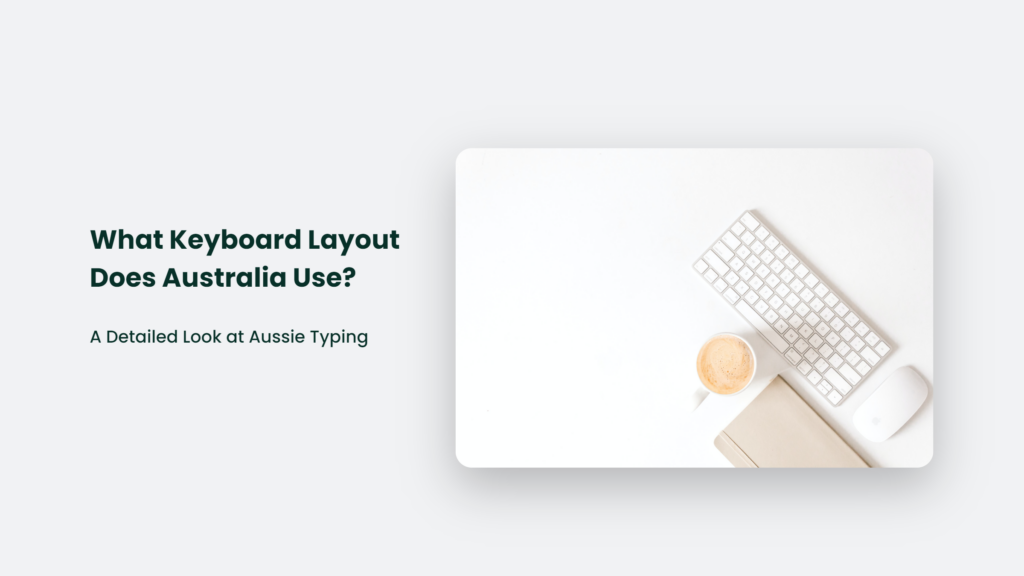G’day mates! Have you ever wondered what keyboard layout folks Down Under use for all their typing and emailing needs? As an Australian living in the land of giant spiders and cute quokkas, I’ve had plenty of experience with our unique keyboard setup. So grab a cold V.B., put some shrimp on the Barbie, and let’s dive into the fascinating world of Aussie keyboard configurations!

What Keyboard Layout Does Australia Use: A Brief History
In the early days of Australian computing, we mostly used the standard U.S. QWERTY keyboard layout. But around the 1980s, as personal computers became more prevalent, there was a push to adopt a keyboard more suited to the way Aussies type and spell.
You see, while Australia uses British spelling for the most part, our slang and lingo have evolved differently from the Mother Country. We needed a keyboard layout tailored for typing “g’day,” “barbie,” and “heaps good” without hassle.
After vigorous debates, trials, and tribulations, the Australian Standards Association formally adopted the U.S. International keyboard layout in the 1990s. And we’ve stuck with it ever since!
The U.S. International Keyboard Layout
The U.S. International keyboard layout is, as the name suggests, widely used across the globe, especially in countries that utilize U.S. English. Other places that use this layout include Canada, Singapore, Malaysia, and New Zealand.
The main difference between the U.S. International layout and the standard U.S. QWERTY layout is the placement of various punctuation symbols. For example:
The tilde (~) key is moved next to the Enter key
- The pipe (|) symbol shares a key with the backslash ()
- The grave accent (`) shares a key with the tilde (~)
These minor tweaks make typing certain characters easier for Aussies, like the pipe and grave accent. And we can still type all our standard punctuation, numbers, and letters as usual.
Why Not the U.K. Layout?
You might be wondering – if Australia uses British English spellings, why not adopt the U.K. keyboard layout instead?
Well, there are a few key differences between the U.K. and U.S. International layouts:
The U.K. layout has the pound symbol (£) instead of the number sign (#)
- The @ and ” symbols are switched around.
- Additional keys like the vertical bar (|) are in different spots
These variations would have made typing trickier for Aussies accustomed to U.S.-style keyboards. Plus, we don’t need quick access to the pound symbol anyway!
So, the U.S. International layout was the best fit for Australia’s unique lingo and preferences.
Setting Your Keyboard to Australian
If you’re using a computer in Australia, you’ll want to configure your keyboard layout accordingly:
On Windows:
- Go to Settings > Time & Language
- Click on “Language”
- Under “Preferred languages”, select English (Australia)
- Click Options next to English (Australia)
- Go to “Keyboards” and add the U.S. International keyboard
On Mac:
- Go to System Preferences > Keyboard > Input Sources
- Click the + icon and select English (Australia)
- Choose the U.S. keyboard layout option
On Linux:
- Open keyboard configuration tools like GNOME Tweaks
- Add the English (Australia) input source
- Select the U.S. International layout
And voila! You’re all set to type like a true blue Aussie. No worries at all.
Typing in Australian English
Once you’ve got your keyboard configured properly, you’ll be ready to start typing in Australian English. Here are some of the main things to keep in mind:
- Use British spellings like “colour”, “centre”, and “organise”
- Add u’s to words like “labour” and “neighbour”
- Use “s” instead of “z” in words like “organise”
- Use “ise” word endings instead of “ize”, e.g. “standardise”
- Insert extra u’s in words like “aluminium”
It might take some getting used to at first. But think of it as broadening your linguistic horizons!
Frequently Asked Questions:
Are there any other keyboard layouts used in Australia?
A few folks use the standard U.S. QWERTY layout. But U.S. International is by far the most common.
What about Dvorak or other keyboard layouts?
You can use alternate keyboard layouts like Dvorak on Australian keyboards. Just change the settings.
Do all keyboards sold in Australia use this layout?
Yes! Any keyboard purchased in Australia will default to the U.S. International layout.
The Bottom Line:
So there you have it, folks – everything you’ve ever wanted to know about typing on Aussie keyboards! I hope this breakdown of our unique keyboard layout was more interesting than watching the paint dry. If you’re visiting Australia, update your settings so you can type just like the locals. And always remember – no worries, mate!




